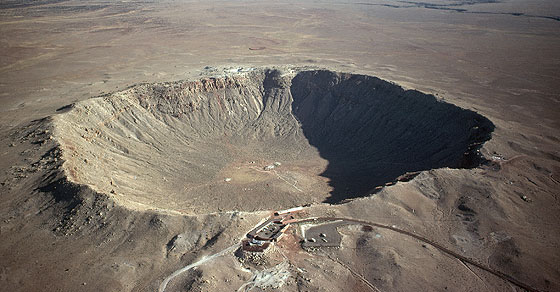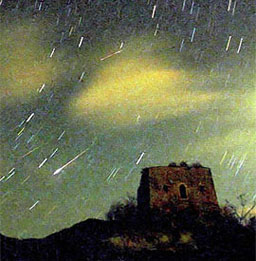
- Making an Impact
- This impact crater in Winslow, Arizona, is one of about 200 on Earth. At 50,000 years old, it’s also one of the newest. The crater is 1.1 km (.7 mi) in diameter and 150 m (495 ft) deep. The meteorite that made it weighed 100,000 tons. Most meteorites that hit the ground are too small to leave a crater, but anything larger than a house explodes just before or during impact and leaves a crater that is much larger than itself.
- Photo © Charles and Josette Lenars/CORBIS
The Sky Is Falling!
Vaporized! The atmosphere protects Earth from meteorites.
Rubbing two things together creates heat through friction. (Rub your palms together, and you’ll feel that friction makes them warm.) Friction created when a meteorite passes through Earth’s atmosphere at more than 40,000 kph (25,000 mph) heats the outer surface of the meteorite to as much as
1,650°C (3,000°F). Then the meteorite vaporizes, or its surface melts and the liquid streams away.
Most meteorites burn up before they reach the ground. If they didn’t, space debris would fall to Earth’s surface like rain. A few meteorites, however, are too big to burn up completely, and they strike Earth, sometimes with spectacular effects.

- Meteor Storm
- Meteorites strike Earth every day, but they’re so small we don’t notice them. About 50,000 tons of cosmic dust stream through our atmosphere every year.
- Photo © Associated Press/ WWP
